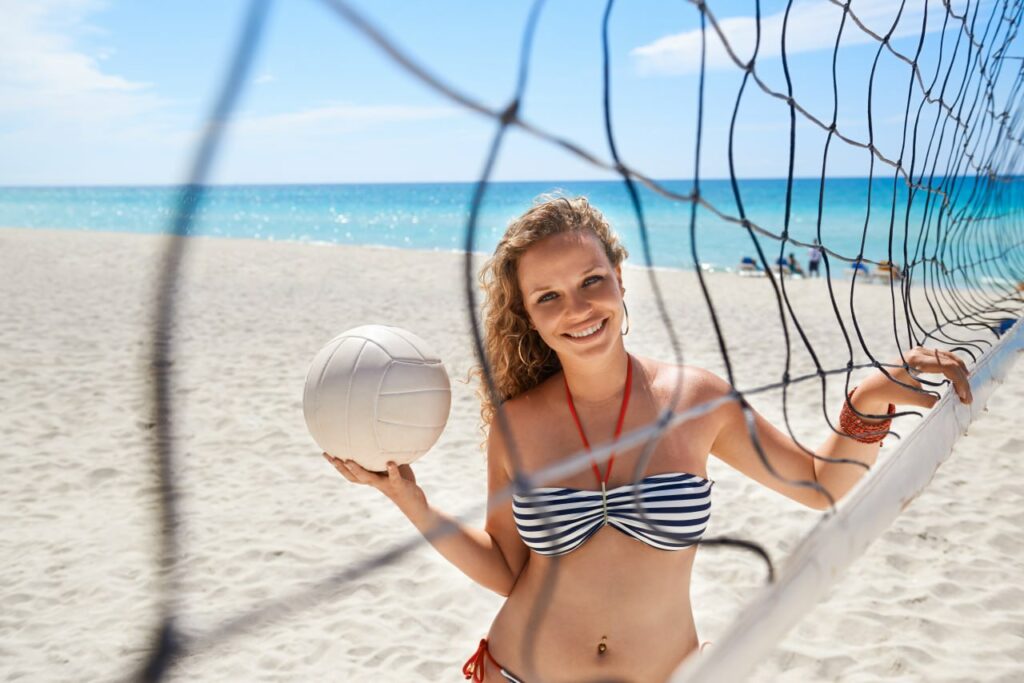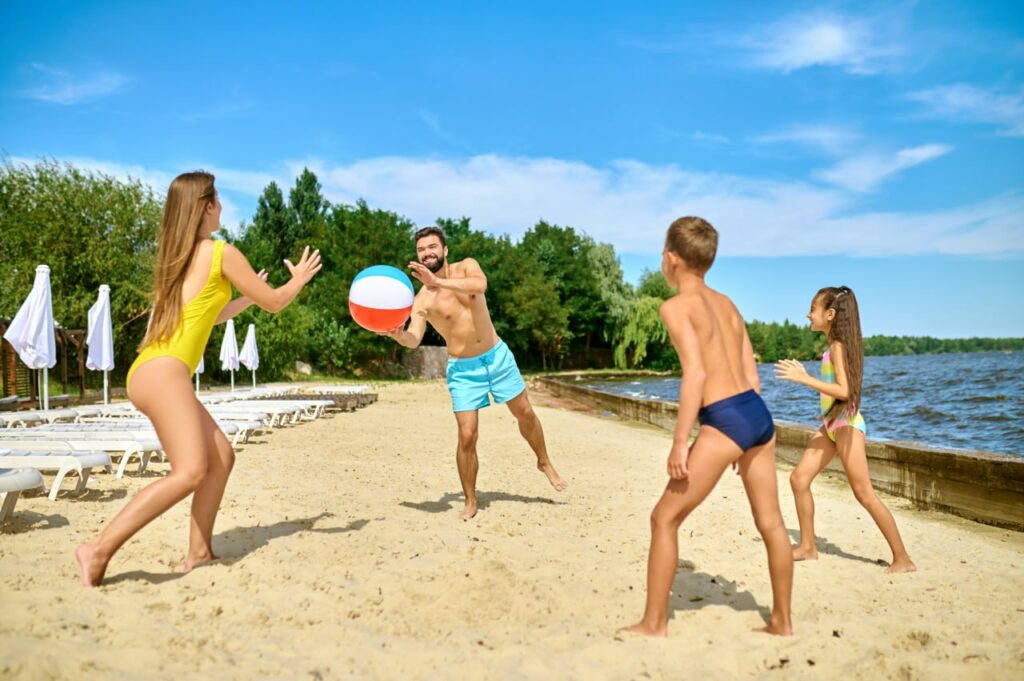Junior beach volleyball, characterized by high energy and dynamic movements, offers young athletes an exciting platform to showcase their talent. However, the physical demands of the sport also expose them to potential injuries. Prioritizing injury prevention and treatment is critical to preserving the health and future of these young athletes. Let’s take a look at common injuries in junior beach volleyball, describing prevention methods and emphasizing the importance of proper warm-up and warm-down.
Common Injuries in Junior Beach Volleyball
- Ankle Sprains. Given the uneven sand surface and dynamic movements, ankle sprains are prevalent. They occur when the ligaments that support the ankle stretch beyond their limits.
- Shoulder Overuse Injuries. The repetitive overhead actions in serving and spiking can lead to overuse injuries in the shoulder, such as rotator cuff tendinitis.
- Knee Injuries. Jumping and landing, especially on an unstable surface like sand, can strain the knee joint, leading to conditions like patellar tendinitis.
- Dehydration and Heat-related Illnesses. The outdoor nature of beach volleyball, often in sunny, hot environments, increases the risk of dehydration and heat-related illnesses.

Proper Equipment: The First Line of Defense Against Injuries
Equipping young athletes with the right gear is essential in minimizing injury risks on the beach volleyball court. Proper equipment acts as a protective barrier and enhances performance, allowing players to focus on the game with confidence. Here’s a rundown of essential beach volleyball gear:
- Specialized Sand Socks. Designed to protect feet from hot sand and minor abrasions, sand socks are a must-have for beach volleyball players. They provide a layer of insulation against extreme temperatures and add a slight cushioning effect, reducing stress on the feet.
- Protective Eyewear. Sunglasses or protective goggles designed for sports use can shield the eyes from harmful UV rays and sand particles, preventing irritation and potential damage.
- High-Quality Beach Volleyball. Using a volleyball specifically designed for beach play, which is typically softer and slightly larger than indoor balls, can reduce the impact on arms and fingers during play.
- Ankle Braces. For athletes with previous ankle injuries or those looking to prevent such injuries, ankle braces can provide essential support during the dynamic movements of beach volleyball.
- Moisture-wicking Apparel. Lightweight, breathable clothing helps manage sweat and keeps the body cool, reducing the risk of heat-related issues.
- Sun Protection. A high SPF, water-resistant sunscreen, and a hat or visor are crucial to protect the skin from prolonged sun exposure during outdoor play.
By ensuring that junior athletes are equipped with these essential items, coaches and parents can significantly contribute to their safety and comfort during training and competition.
Injury Prevention Techniques
A well-rounded strength and conditioning program that focuses on the core, legs, and shoulders can enhance stability, power, and endurance, reducing the risk of injury. Proper technique in all aspects of the game, from serving to landing, is essential. Coaches should emphasize correct form to prevent stress on joints and muscles.
Understanding and adapting to the playing conditions, such as the type of sand and outdoor temperature, can help in injury prevention. Hydration stations and shaded rest areas are essential during training and matches.

Warm-up and Cool-down Routines
A dynamic warm-up should mimic the movements of beach volleyball, gradually increasing in intensity. Exercises like arm circles, leg swings, and light jogging on the sand warm up the muscles and prepare the body for the explosive movements required in the game.
Incorporating volleyball-specific drills, such as light passing and spiking, further prepares the muscles and joints for the game, reducing the risk of acute injuries.
A proper cool-down, consisting of low-intensity activities like walking followed by static stretching, helps in gradually lowering the heart rate and stretching the major muscle groups used during play. This routine aids in recovery and flexibility.
Play Safe
It should be noted that ensuring the safety and well-being of young beach volleyball athletes requires a multifaceted approach that includes education, proper training, and a supportive environment. Implementing targeted injury prevention techniques, effective warm-ups and warm-downs, and fostering a culture that prioritizes athlete health will help coaches and parents help young athletes enjoy safer and healthier beach volleyball.
Ultimately, the goal is to produce not only skilled athletes, but also healthy individuals who can enjoy beach volleyball for years to come.

